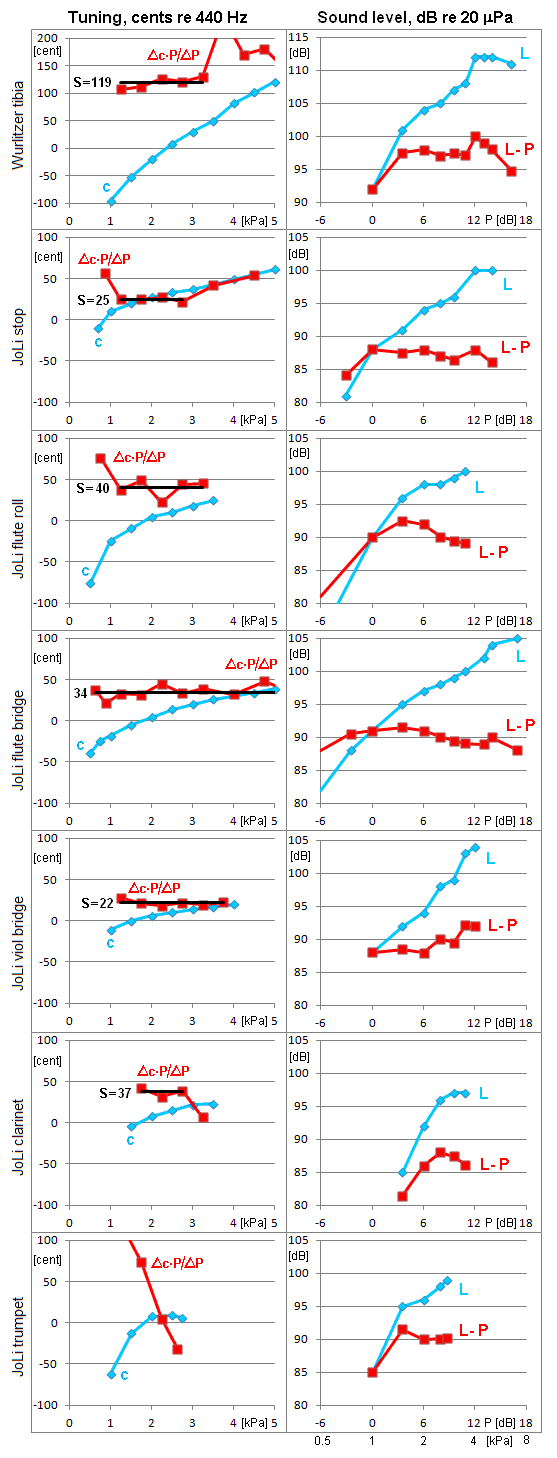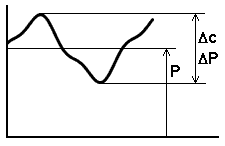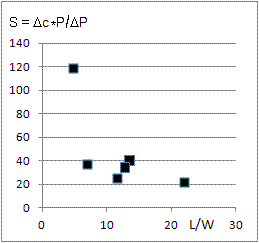
Stoppered flue
L 150
W 31
H 16
D1,2
S=119
L185
W16
H 11
D 0,35
S=25
L 325
W 24
H 11
D 0.45
S=40
L 307
W 24
H 10
D 0,35
S=34
L 352
W 16
H 7
D 0,5
S=22
L 175
W 25
Lt 23
D 1,0
S=37
L 300
Wm 40
Lt 14
D 0,7
S=?
The column at right lists pipe measures in mm: length L, width W, cutup H, flue D, tongue length Lt, mouth width Wm.
The left set of graphs shows pitch c in terms of cents relative to a' = 440 Hz, 100 cents = 1 semitone. The cents measure is a relative quantity, it describes the pitch relative to the nominal pitch of the pipe. A natural thing would now be to compare this to relative changes in blowing pressure. Thus for each measured pair of points P1/c1, P2/c2 first take the cents difference
Δc = c2-c1. Then suppose this is S times the relative blowing pressure difference (absolute difference divided by mean value)
ΔP/P = 2*(P2-P1)/(P1+P2). This leaves us with what we may call the
pitch
pressure sensitivity S = Δc * P / ΔP

